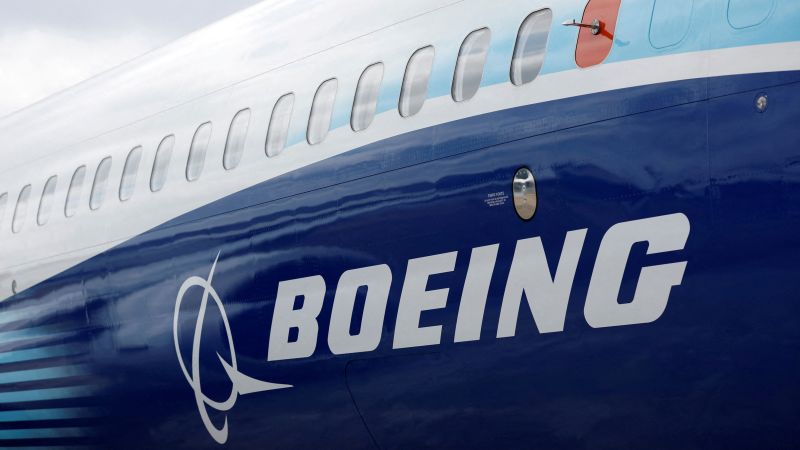Boeing has faced a myriad of challenges over the past six years, and these troubles could be exacerbated by potential new tariffs that may impact the beleaguered company. As the largest exporter in the United States, Boeing’s current crisis could resonate across the broader U.S. economy, making this issue particularly pressing. The financial strain caused by tariffs could lead to significant price increases for the company’s jets, deterring demand and limiting supply even further.
In the event that additional tariffs are imposed by other countries on U.S. goods, the costs of Boeing’s jets could rise by millions of dollars. Current tariffs already pose a formidable challenge, inflating the cost of constructing aircraft in the U.S. This situation is compounded by Boeing’s reliance on international suppliers for much of its manufacturing needs, exposing the company to vulnerabilities in its production process.
Boeing’s difficulties, however, extend beyond financial constraints; the company has also faced grave safety and quality control failures, which have resulted in fatal accidents and the grounding of several aircraft models. The pandemic dealt another devastating blow to Boeing, as the global demand for planes diminished dramatically during this period, forcing production cuts and layoffs. Furthermore, a strike at the end of the previous year halted nearly all of Boeing’s manufacturing operations for two months, further worsening the company’s woes.
The tariff situation is an unwelcome addition to a long list of ongoing troubles for Boeing. Ron Epstein, an aerospace analyst at Bank of America, remarked on the critical timing of the tariff disputes, as ominous signs suggest the possibility of a U.S. recession. The implications are far-reaching; tariffs on aircraft and component parts could significantly impede production not just at Boeing, but across various aerospace suppliers and manufacturers, leading to a ripple effect that could influence the entire economy adversely.
Epstein questioned the motivation behind penalizing a manufacturing industry that performs as a substantial net exporter. Boeing’s executives expressed optimism that the U.S. government, particularly under the Trump administration, would work to alleviate their tariff concerns. Ortberg, a key figure at Boeing, mentioned his deep engagement with various levels of the administration, emphasizing the company’s continuous dialogue with cabinet members and even “POTUS” himself.
Despite the adversity, Boeing claims to support roughly 1.6 million jobs directly and indirectly, of which about 150,000 are employees in the United States. However, recent indications of trouble emerged when two aircraft destined for Chinese clients were returned to Boeing’s Seattle office rather than being delivered. This unfortunate return was due to a staggering 125% tariff imposed by China on all imports from the U.S., a retaliatory measure following the U.S.’s 145% tariff on numerous Chinese goods. This trend of canceled aircraft deliveries to China might signal an escalating trade problem for Boeing.
China’s significance in the global aviation market cannot be overstated, as it is poised to become the largest buyer of commercial jets. Boeing projects that Chinese airlines will require around 8,830 new airplanes over the next two decades, representing a sizable portion of the global market. However, trade tensions and subsequent tariffs have shifted the balance, allowing Boeing’s European rival, Airbus, to encroach on its share of the market.
Historically, Chinese customers ordered 122 planes from Boeing between 2017 and 2018, but there has been a drastic decline in orders since then—a mere 28 plane orders over the past six years. Notably, Boeing has not secured a single order for a passenger jet from Chinese carriers since 2019. As a result, Boeing’s recent financial performance was underwhelming, reporting a smaller-than-expected core operating loss for the first quarter.
Despite these challenges, Boeing maintains a significant backlog of orders, including 195 planes for China and further orders from unidentified airlines. There is a belief that even if Chinese clients withdraw their orders due to tariffs, alternative buyers may emerge, ensuring the company can still meet its production targets.
However, the unraveling effects of additional tariffs could complicate Boeing’s sales strategies, particularly in an environment where only China currently imposes retaliatory tariffs. If other countries follow suit, Boeing could find itself ensnared in a broader trade conflict that could hamper not just its operations but also those of international airlines needing new aircraft.
Moreover, building aircraft has its complications; roughly 80% of the components in Boeing’s planes are sourced from foreign suppliers. This reliance significantly impacts Boeing’s production capabilities because tariffs increase the cost of parts and materials. To illustrate, the wings of the 787 Dreamliner are sourced from Japan, highlighting the complexities associated with international supply chains.
Amidst the dire outlook, Boeing’s executives believe they can manage the financial implications associated with tariffs on imported parts. They anticipate tariff credits will offset some of the costs, projecting net annual tariff costs to remain manageable below $500 million. Despite deep operational losses totaling $51 billion since 2018, Boeing continues to strategize to navigate these turbulent waters,



